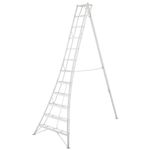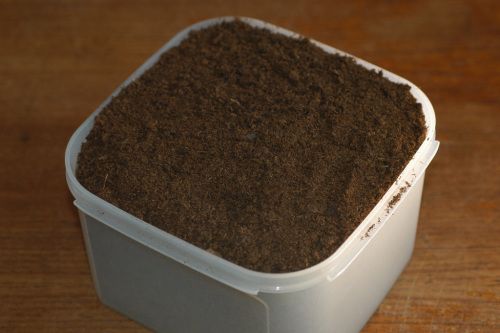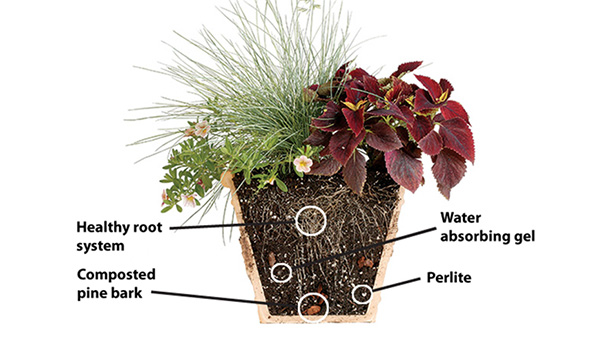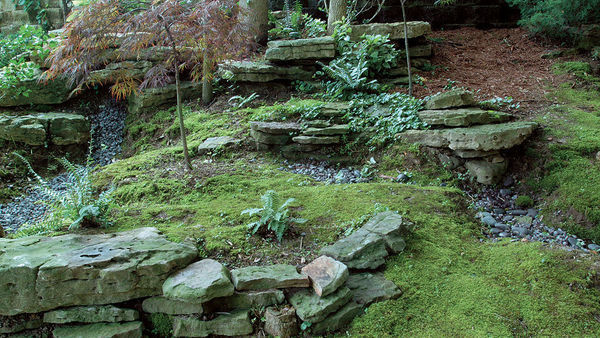
The fact that gardeners have enjoyed a long love affair with peat moss is completely understandable. It’s been among the potting mix/soil additive favorites for what seems like forever. It’s some special stuff.
After all, peat can absorb 10 to 20 times its weight in water, and it lightens the soil, which allows for good drainage. Those things aside, it’s probably best loved for the beneficial bacteria and natural fungicide that battles disease including the dreaded damping-off that terrorized seedlings everywhere.
Here’s the problem: Peat use is being discouraged, as it’s not considered an environmentally sound practice. The fact is that although peat moss is technically renewable, it takes about 1,000 years for one yard to be grown in a peat bog. When you look at it that way, peat is closer to a nonrenewable resource—at least in our lifetime (and our grandchildren’s lifetime and so on).
Many gardeners are choosing to use less peat and turning to other alternatives. One caveat: neither of these things has the disease-fight capabilities that peat moss has. However, using more of the following natural resources in your potting mix will allow you to use less peat.
It’s worth mentioning that none of these soil additives (peat moss included) offer much nutritional value to plants. They always need to be blended with another soil (or soil-type medium) or compost for nourishment.
Rice hulls
Rice grains are dried and hulled before being prepared for human consumption by being parboiled (converted) and then polished. Usually the hulls would be considered waste and disposed of. But some clever person decided to utilize them as a potting soil additive.
Rice hulls are quite thin and nearly weightless. They offer lighter soil, good drainage, and good water absorption. They’re cheaper than peat by far and an obvious renewable resource. What’s not to love?
Coir
Coir (pronounced koy-er) is also referred to as coco-peat or coir-peat. It’s literally the hairy, outside layer of the husk on coconut shells. It’s my favorite.
There are two types of coir: that which is harvested from young coconuts and that which is harvested from mature coconuts. The coir used for twine, rope, sacks, and mats is collected from young (light-colored) coconuts and referred to as “white fiber.” While the coir used as a potting soil additive is harvested from mature coconuts and is very slow to break down.
Many times you’ll purchase the coir in “blocks,” which expand like mad when soaked in water for a while. Like rice hulls, coir lightens soil and retains water like a boss. It’s also more expensive than peat.
Some will argue that coir isn’t close to being “the perfect green alternative” when you factor in processing and shipping, which adds to pollution. I will concede that. But in my book, since coconuts are grown and harvested for their meat anyway, coir is still more ecofriendly than its peat counterpart.
Fine Gardening Recommended Products

Hasegawa Tripod Ladder
Fine Gardening receives a commission for items purchased through links on this site, including Amazon Associates and other affiliate advertising programs.

The New Organic Grower, 3rd Edition: A Master's Manual of Tools and Techniques for the Home and Market Gardener, 30th Anniversary Edition
Fine Gardening receives a commission for items purchased through links on this site, including Amazon Associates and other affiliate advertising programs.

Corona High Performance Orchard Loppers
Fine Gardening receives a commission for items purchased through links on this site, including Amazon Associates and other affiliate advertising programs.





















Comments
You're right, coconut coir can be a great alternative and I've been using it more and more in my garden lately. On the site https://coirganics.com/ I found a quality product that is suitable for creating excellent soil
Log in or create an account to post a comment.
Sign up Log in